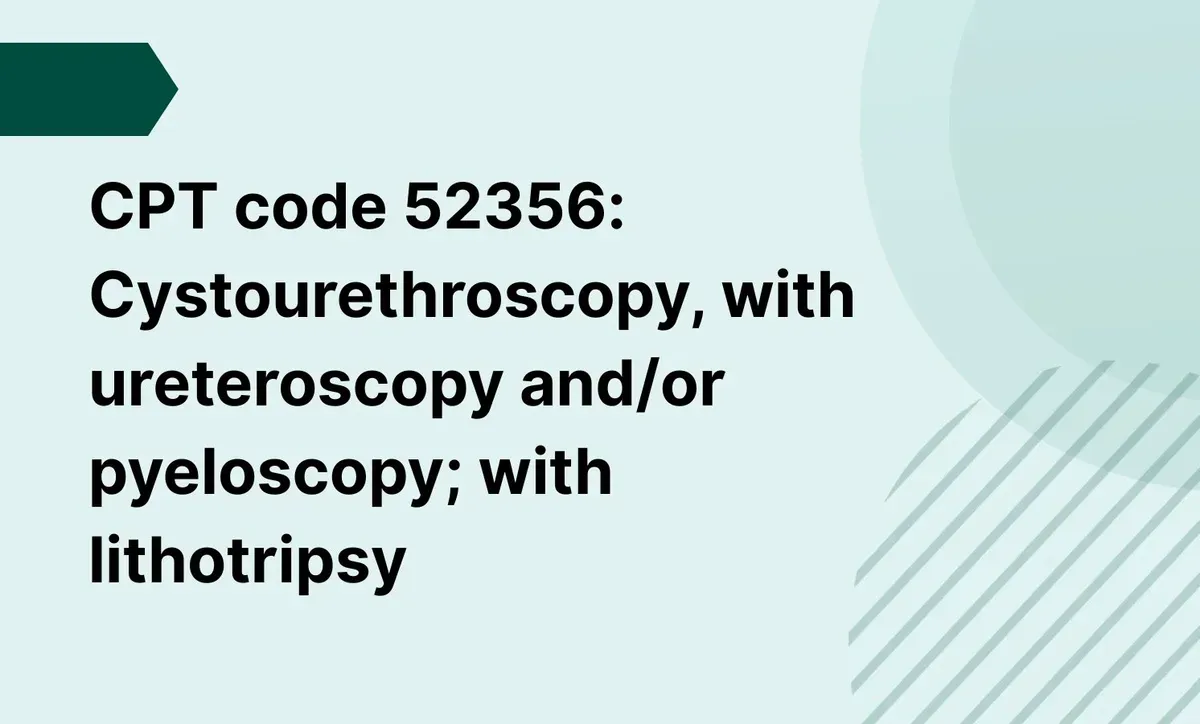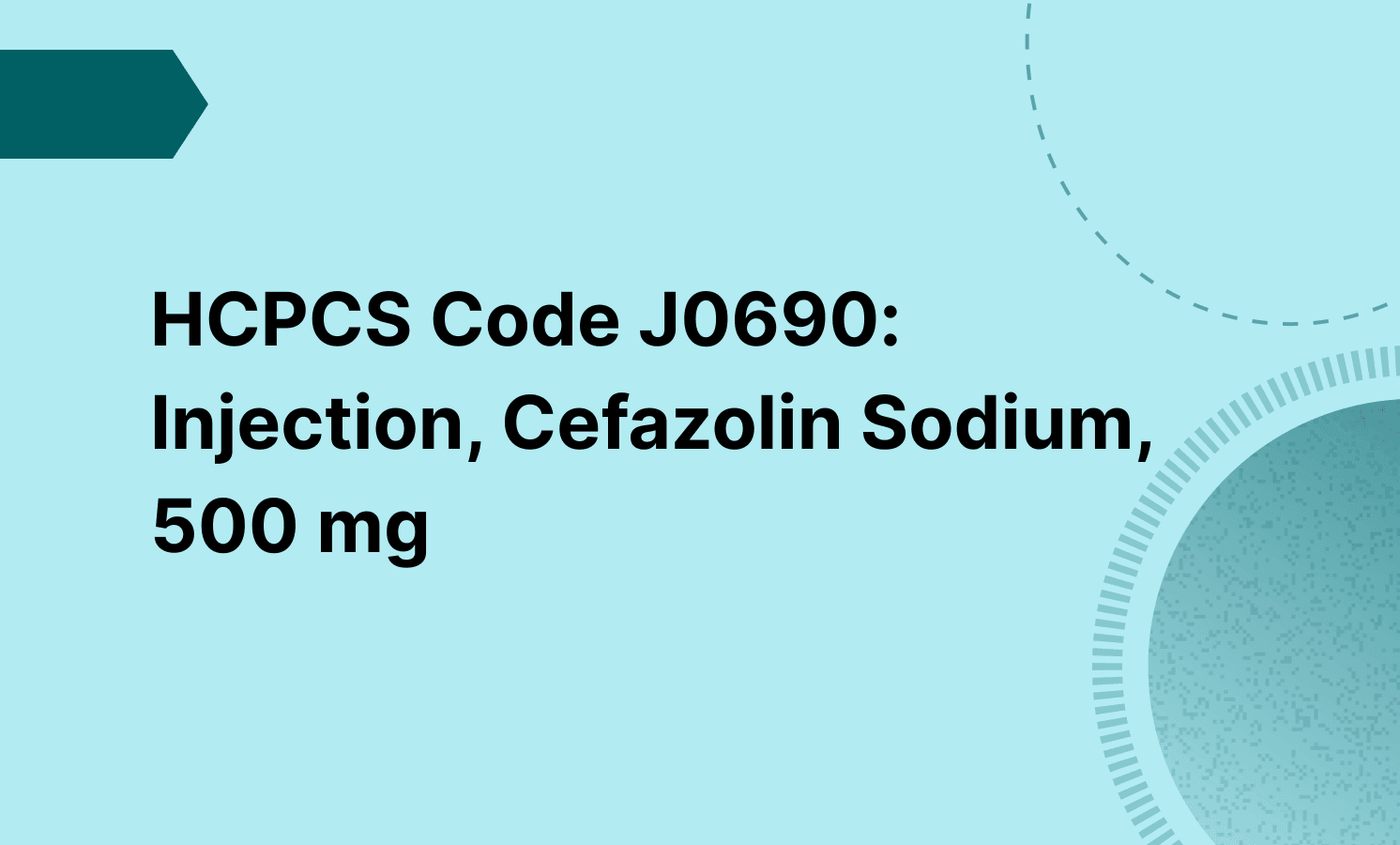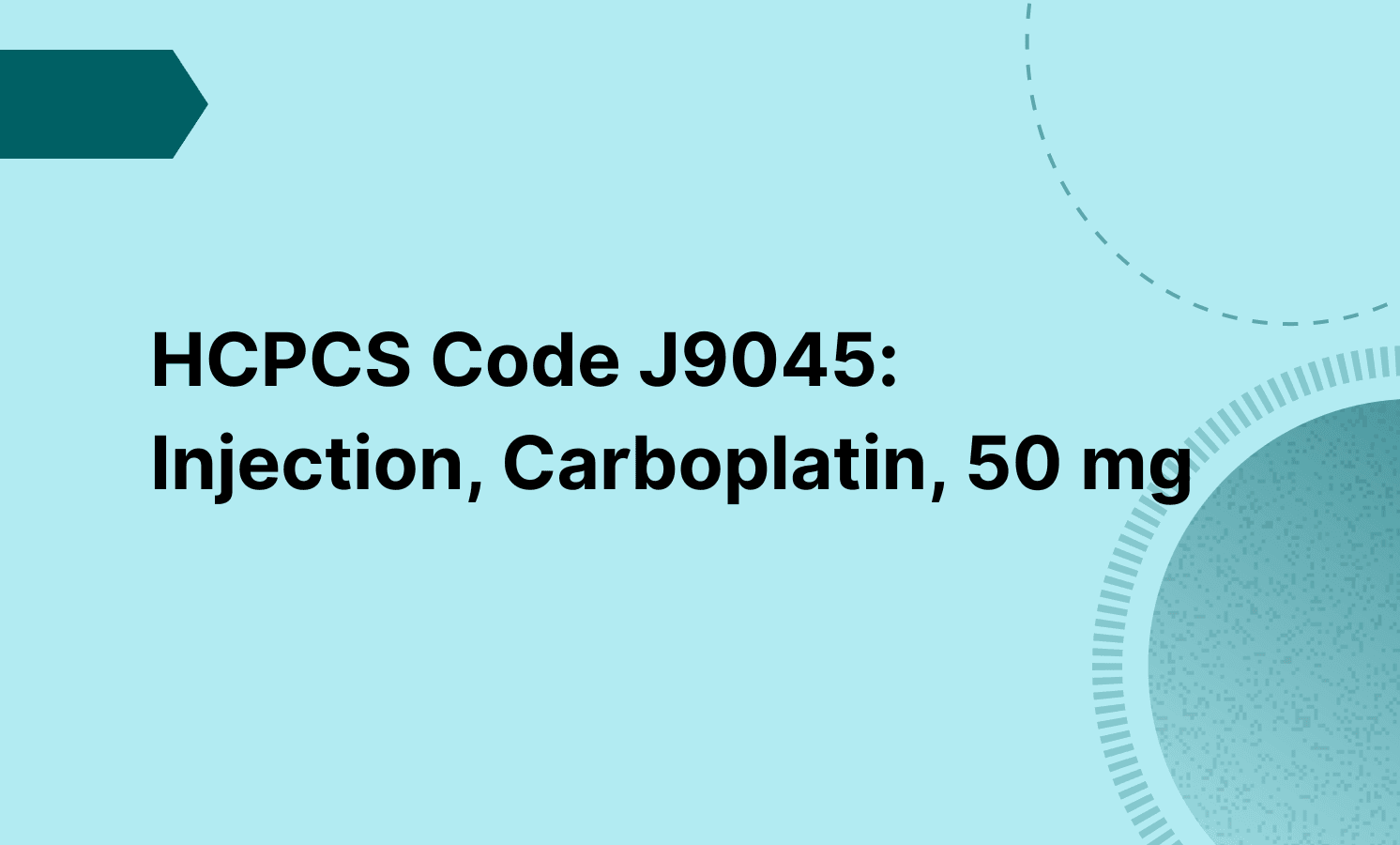No. CPT 52356 includes indwelling ureteral stent placement, ureteroscopy, and laser lithotripsy on the same side. Reporting 52332 separately would violate CPT coding directives and NCCI guidelines.

CPT code 52356: Cystourethroscopy, with ureteroscopy and/or pyeloscopy; with lithotripsy
Learn about CPT code 52356 for ureteroscopy with laser lithotripsy and stent placement, including billing, documentation, and coding guidelines.
Use Code
Frequently asked questions
No. Fluoroscopy (e.g., 76000) may be billed separately if it’s not bundled and is clearly documented as necessary for the primary procedure performed.
Use modifier -50 for bilateral procedures or -LT/-RT if your payer requires it. Treating separate ureter stones qualifies as two distinct procedures, but check payer rules to ensure proper coding.
EHR and practice management software
Get started for free
*No credit card required
Free
$0/usd
Unlimited clients
Telehealth
1GB of storage
Client portal text
Automated billing and online payments






